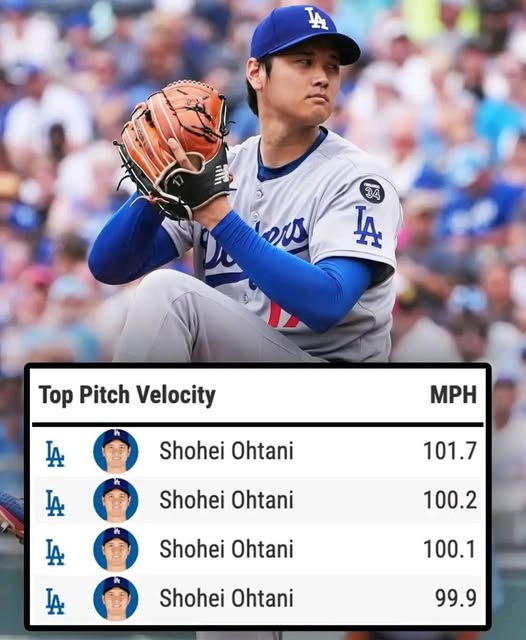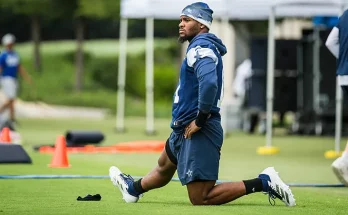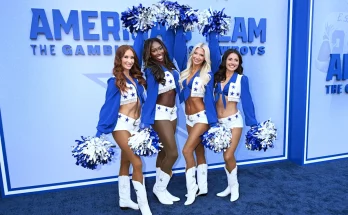Shohei Ohtani is back on the mound—and he’s throwing harder than ever before. In a return that transcends headlines, the Los Angeles Dodgers’ two-way phenomenon has not only rekindled his status as a historic pitcher but may have reached an entirely new level of arm strength and technical refinement. His first three appearances in 2025 have shattered expectations, combining raw velocity, refined mechanics, and strategic pitch sequencing to paint a portrait of a legacy in progress.
Ohtani’s journey back to the mound began in spring training, where tantalizing signs of life emerged in bullpen sessions. In mid-February, the Dodgers’ spring workouts featured 92–94 mph fastballs—a controlled power display from a pitcher still on his comeback trail. By March, he was ramping up his throwing program, slowly rebuilding arm strength and distance in preparation for the season . Analysts and scouts saw the early version of Ohtani 3.0: stronger, more confident, technique-conscious.
However, the real statement came in mid‑June, when Ohtani made his long‑awaited MLB pitching debut with the Dodgers—the first time in 21 months that he’d taken the mound since undergoing a second Tommy John procedure in September 2023 (. The stage was set. Dodger Stadium was buzzing. Ohtani lined up as an opener against the San Diego Padres. With adrenaline coursing through him and thresholds shifting, he launched into a single inning that would herald something extraordinary.
The readings didn’t lie: his fastballs averaged 99.1 mph—his highest average in franchise history—and touched 100.2 mph That evening wasn’t just a flash—it was confirmation. As PitcherList observed, “His average four‑seam fastball velocity of 99.1 mph was a career high in his 84 games… highest first‑inning velo in his career” . The ball wasn’t just coming out hard; it had morphed into something tactically formidable.
Raw velocity was just the beginning. Statcast data revealed that Ohtani’s sinker was averaging 97.4 mph with significant movement—25 inches of vertical drop and 15 inches of arm‑side run (. That’s not the output of a star merely returning—it’s the work of a pitcher evolving. He increased his sinker usage from negligible levels to nearly 30% in that outing ). His elite sweeper—the pitch with which he has historically struck out more hitters than he has with any other—came back sharper and faster: averaging 86.6 mph with horizontal movement that matched his peak from previous seasons .
Beyond numbers, the engineering behind the performance stands out. Analysts pointed to a revamped wind‑up and release, placing both his delivery and release point at the lowest of his career . Normally a rocket who works from the stretch, Ohtani adopted a more traditional wind‑up: shoulders squared to the plate, foot relocation behind the rubber, and a measured plant foot—crafted precision over past flair (f. That led to a release point improvement of over two inches compared to his 2023 baseline . Those refinements—in arm slot, release consistency, and mechanic reliability—are the bedrock of long-term arm health and sustained velocity.
Crucially, he didn’t stop there. Against Kansas City on June 28—his third mound appearance of the season—Ohtani extended to two innings. He racked up a new personal best: a 101.7 mph fastball that eclipsed his previous high of 101.4 mph (set in 2022) . That outing wasn’t just about heat—it was about effectiveness: two innings, one hit, one walk, three strikeouts, and zero runs allowed . His heater became the fastest by any Dodgers pitcher all season .
Dodgers manager Dave Roberts and the front office have praised his cautious escalation. Roberts noted they aimed for 95‑96 mph, but Ohtani gave them 100—and more . They’re implementing a “gradual” ramp-up—one inning at a time, building to regular two‑inning stints, targeting late‑season full workloads . That same cautious tone echoes in earlier reports, with the Dodgers treating Ohtani’s schedule like a two‑phase project: restore mechanics and health first, then optimize power and length .
From one perspective, it’s a throwback storyline: a superstar reclaiming his platform. From another, it’s a transformation narrative. Ohtani is re-crafting himself. His pre-injury averages hovered in the mid‑90s, but now he’s ticking 97–99 mph routinely—he’s stronger, smarter, and more evolved . His repertoire is deeper, blending velocity with movement and command rooted in mechanical evolution.
Yet, even amid the velocity surge and systematic rebuilding, Ohtani is realistic. Command is not yet elite: his first outing showed 16 strikes to 12 balls. His sweeper and sinker still await fine-tuning. But his off‑speed and breaking ball arcs remain laden with upside . The command issues? Those are the expected byproduct of two surgeries and limited spring mileage. The velocity? That’s unexpected—and electrifying.
Beyond the physical performances lies the intangible: Ohtani’s mindset. He’s approached this return with surgeon-like precision and competitive hunger. The zeal to feed velocity, adjust wind-up, and shape pitches speaks to an athlete who, even recovering from significant physical trauma, refuses to stand still. He’s refused to let age, injury, or time define his narrative. Instead, he treats every inning as a reinvention opportunity.
For fans, that means witnessing more than just thrilling fastballs—it means witnessing evolution. This Ohtani may be more than a returnee; he may be a reinvention. If he can carry even half of this newfound arsenal and velocity into sustained starts, the two-way star might enter rarified air: not just as a legend in recovery, but as an architect of a finer self.
Of course, the future remains measured. The Dodgers aim to build him gradually, mindful that a rush could undo the gains. Roberts has emphasized that a full season of pitching is not a foregone conclusion in 2025—they’re focused on October readiness . Pitching more innings won’t mean less hitting—Ohtani will continue batting cleanup, leading the National League in home runs and on-base plus slugging . That dual burden demands endurance and calculated rest.
Still, for those who witnessed his blazing fastballs and sinking shift, this much is clear: Ohtani is back, and perhaps better than ever. In each appearance, he’s not just revisiting past brilliance—he’s scripting a sequel that might surpass it. One inning evolved into two; 99 evolved into 102. Mechanics refined. Secondary pitches strengthened. The velocity dial isn’t just turned up—it’s re-engineered.
That’s the real story. Shohei Ohtani’s return isn’t merely a comeback. It’s a statement that even after two major surgeries, physical setbacks, and shifting team dynamics, his ceiling remains unbroken—and might just be rising. Whether he becomes a reliever, opener, or traditional starter, these outings have made it clear: he’s throwing harder and smarter than ever—bringing his A‑game for a new chapter of two-way greatness.
In just three mound appearances, Ohtani has generated two electric headlines: the first MLB fastball north of 100 mph in July 2025, and the fastest pitch of his career at 101.7 mph. These emerge amid mechanical refinement and cautious workload expansion. While command and pitch execution await polish, the velocity and structural changes hint at an entirely new phase in his career. For Dodgers fans—and baseball at large—the real thrill lies in what comes next.



